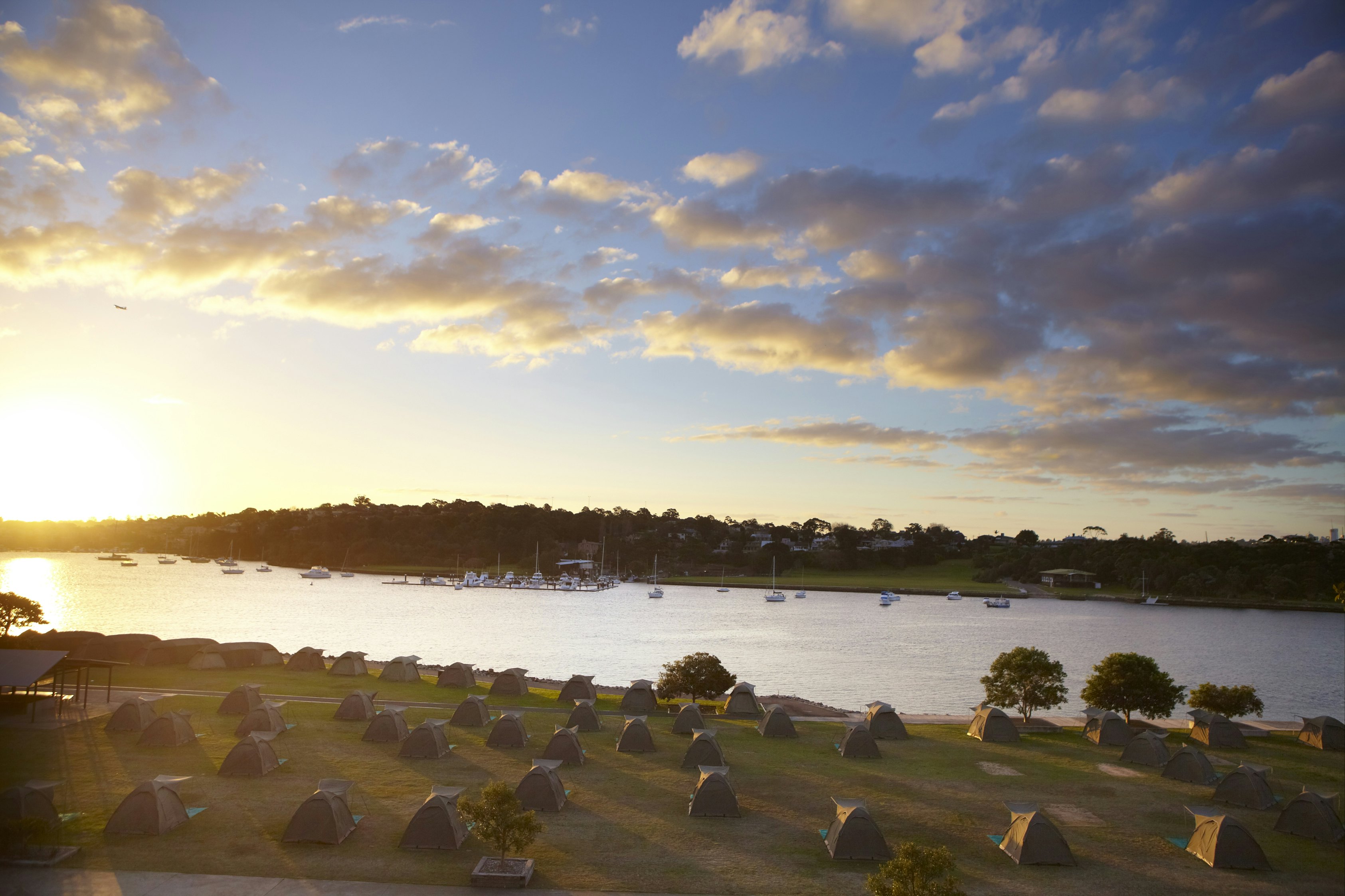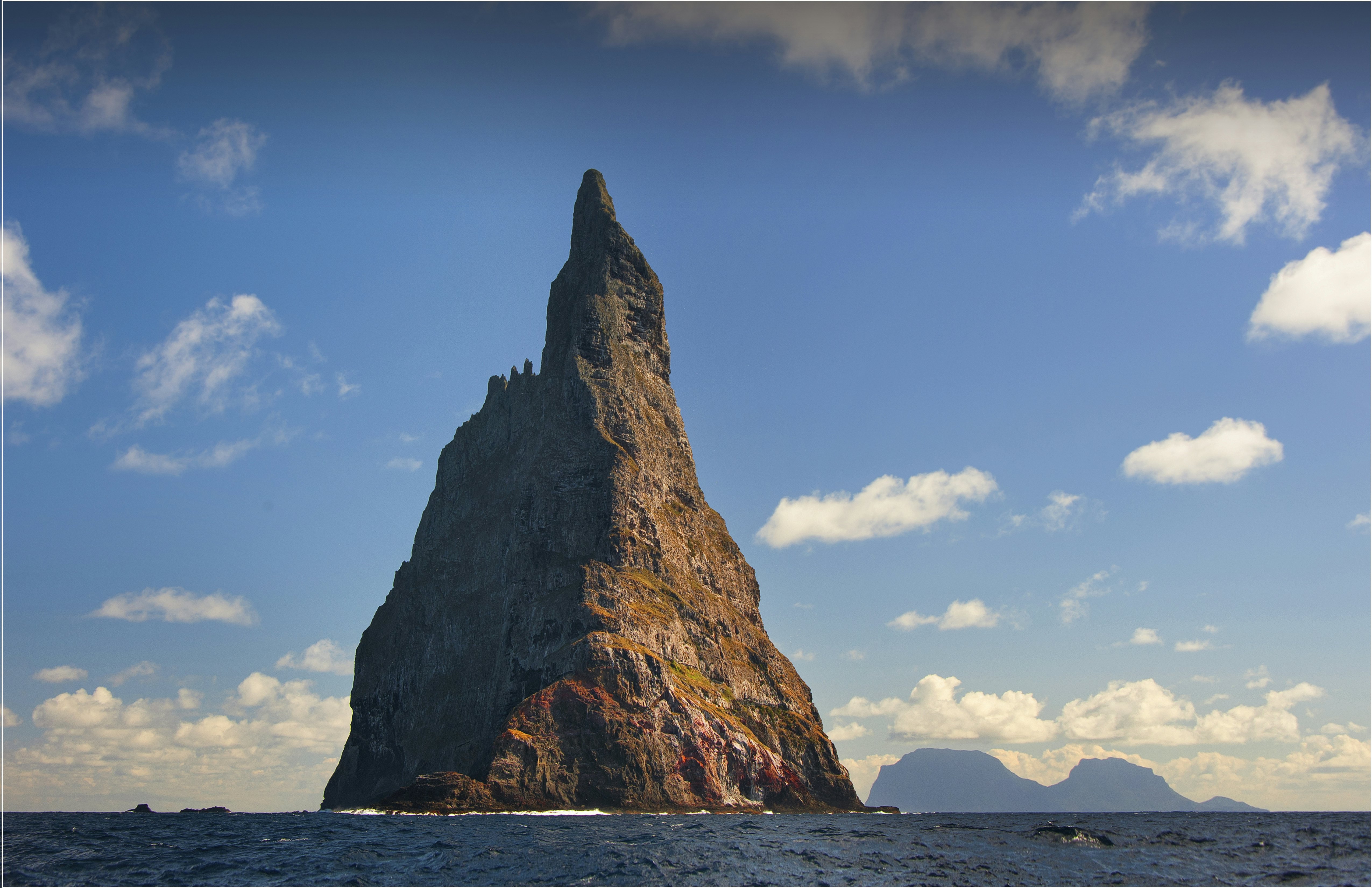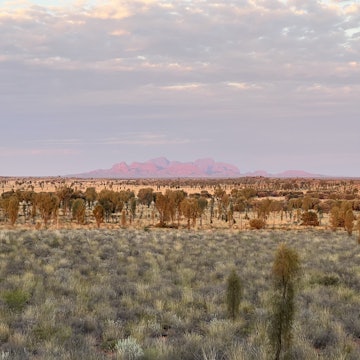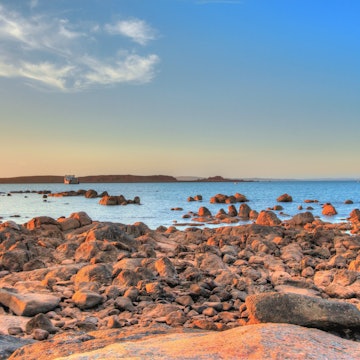

Unique aerial panorama of the famous Whitsunday Islands. 4FR / Getty Images
While it could be argued that Australia’s best island is, in fact, Australia itself, this country-continent exports some of its best commodities offshore, with its 8000-plus islands offering escapes, adventures and oddities to travellers of all stripes. Underwater, on-land, cultural or quaint: whatever floats your boat, set sail to discover Australia’s best islands for you.

1. Beaches: Whitsunday Island
Australia’s islands boast some of the most bonny beaches on the planet: Fitzroy Island’s flawless Nudie Beach, Great Keppel’s 17 serene stretches of sand, and the untouched shores of the far-flung Cocos (Keeling) Islands to name a few. But for a beach so postcard-perfect it’s practically a cliché, drop your towel at Whitehaven Beach on North Queensland’s Whitsunday Island. With 7km of eye-smartingly pure white sand, pristine turquoise waters and a lush jungle backdrop, it’s little wonder Whitehaven has won accolades – best beach, cleanest beach, most eco-friendly beach – from pundits across the globe. Oh, and about that sand: its 98% silica content – the source of its blinding whiteness – means it won’t burn your bare feet, even on the hottest of Queensland days. Can this place be any more perfect?

2. Wildlife: Kangaroo Island
Macropods, sea lions and koalas, oh my! Kangaroo Island, 13km off the South Australian coast, is often touted as ‘a zoo without fences’ thanks to its hefty tally of wild, roaming animals. From the waddling colonies of Seal Bay to endemic echidnas to the 'roos that give it its name, the island – Australia’s third largest – attracts fauna fans in droves. Rottnest Island is another world-beater on the wildlife front, thanks to its native population of about 10,000 goofy-smiled quokkas; over in the far east, Fraser – the world’s largest sand island – is home to a large population of pure-bred dingoes.
Read more: Eating on Kangaroo Island: where to find the best feasts
3. Indigenous experiences: Bremer Island
Off the coast of Eastern Arnhem Land in the Northern Territory, beguiling Bremer Island is a Top End treat, both culturally and visually. Remote and largely untouched by modern life, Bremer is home to the Yolngu people, who partner with the island’s only accommodation – Banubanu Beach Retreat – to give visitors a taste of local indigenous customs and traditions, from basket weaving to crab catching. To the northeast, Thursday Island and the other 100-plus islands of the Torres Strait offer an immersive insight into Torres Strait Islander life and culture.

4. Diving: Heron Island
Renowned as one of the world’s best scuba spots, Heron Island (90km off the central Queensland coast) is a diver’s dream, with warm clear waters teeming with sharks, rays, sea turtles, whales and more than 900 tropical fish species. The World Heritage–listed marine national park offers aquatic adventures for everyone from beginners to experts; an island-based research centre offers insights into Heron’s unique underwater world. But don’t take just anyone’s word for it: Heron Bommie – with its spectacular coral forests and massive schools of colourful reef fish – was one of Jacques Cousteau’s top 10 favourite dive destinations.
Read more: Australia's best snorkelling and diving spots

5. Snorkelling: Lady Elliot Island
The Great Barrier Reef is no slouch when it comes to stupendous snorkelling, but you’ll find arguably the best of the best at Lady Elliot Island. As one of the Reef’s most remote coral cays, you’ll need to hop on a charter flight to get here, but the abundance of manta rays – an estimated 700 in the waters surrounding the island – turtles, dolphins, whales and hundreds of other marine-life species make the journey oh-so worth it. Corals here – hard and soft – are healthy, colourful and thriving, thanks largely to Lady Elliot’s location in a marine-park ‘Green Zone’, which offers its sub-aquatic species the highest protection.
Read more: Surf Australia: where to find the best breaks

6. Urban exploring: Cockatoo Island
Not all of Australia’s islands are paradisiacal jewels and palm-studded getaways: Sydney’s Cockatoo Island is a gritty historical complex that’s been an 1800s convict prison, a reform school for girls, a rough-and-ready shipyard and a naval base. Today, the Unesco World Heritage site is a slightly creepy – and highly photogenic – destination that welcomes visitors with evocative tours of its heritage buildings, plus cafes, bars, live performances and overnight accommodation ranging from stays in an erstwhile fire station to waterfront camping. On a quest for quirky? Rival city Melbourne offers itty-bitty-island carousing at Yarra River watering hole Ponyfish Island.
Read more: Sydney's best gin experiences
7. Luxury: Haggerstone Island
Lizard Island, Orpheus Island, Hayman Island, Hamilton Island… Australia is spoiled for choice when it comes to luxury. But for the ultimate in island indulgence, remote Haggerstone Island – a two-hour private charter flight from Cairns – is where it’s at. And by ‘it’, we mean: voluptuous villas and huts, exclusive access to pristine reefs, feasts pulled straight from the sea, custom adventures and pampered, privileged privacy. For the most splendid isolation, splash out and hire the entire island for yourself.

8. Backpackers: Magnetic Island
A stay on Magnetic Island – known as ‘Maggie’ to her mates – is practically mandatory for anyone traipsing Australia’s east-coast backpacker trail. A stone’s throw from Townsville, Maggie is both a residential island – home to 2500 people and about 500 koalas – and a plum party destination, thanks to super-social hostels, raucous pubs, boozy beach parties and zany shenanigans.

9. Adventure: Lord Howe Island
If you’re not mucking around when you say you want to "get away from it all", get to Lord Howe, 600km from the New South Wales mainland. Visitors are capped at 400 (the island’s permanent population is a tiny 350), mobile phone coverage is non-existent, wi-fi is unreliable and the island’s biggest on-land draw – Mount Gower – is a lonely mountain peak that you likely won’t be sharing with anyone else. If you do crave company, hit Ned’s Beach: its clear, shallow waters are home to hundreds of friendly fish.
Read more: Explore the sustainable paradise of Lord Howe Island

10. Whale watching: Tasmania
Rug up and head south to Australia’s biggest island for spouter spotting galore. The east coast of Tasmania lies directly on the migration path of thousands of whales – humpbacks, southern right, orcas and even the occasional blue – between Antarctica and the warmer waters of Australia’s far north. Rugged Bruny Island – two hours south of Hobart – is a prime, panoramic place for whale watching: be there between May and July to catch humpbacks on their journey north, and from September to November for their return to their frigid feeding grounds.
You might also like:
Christmas Island: is this Australia’s best kept travel secret?
How to have a sustainable visit to the Great Barrier Reef
Rock climbing in Australia: where to find the best routes and pitches














